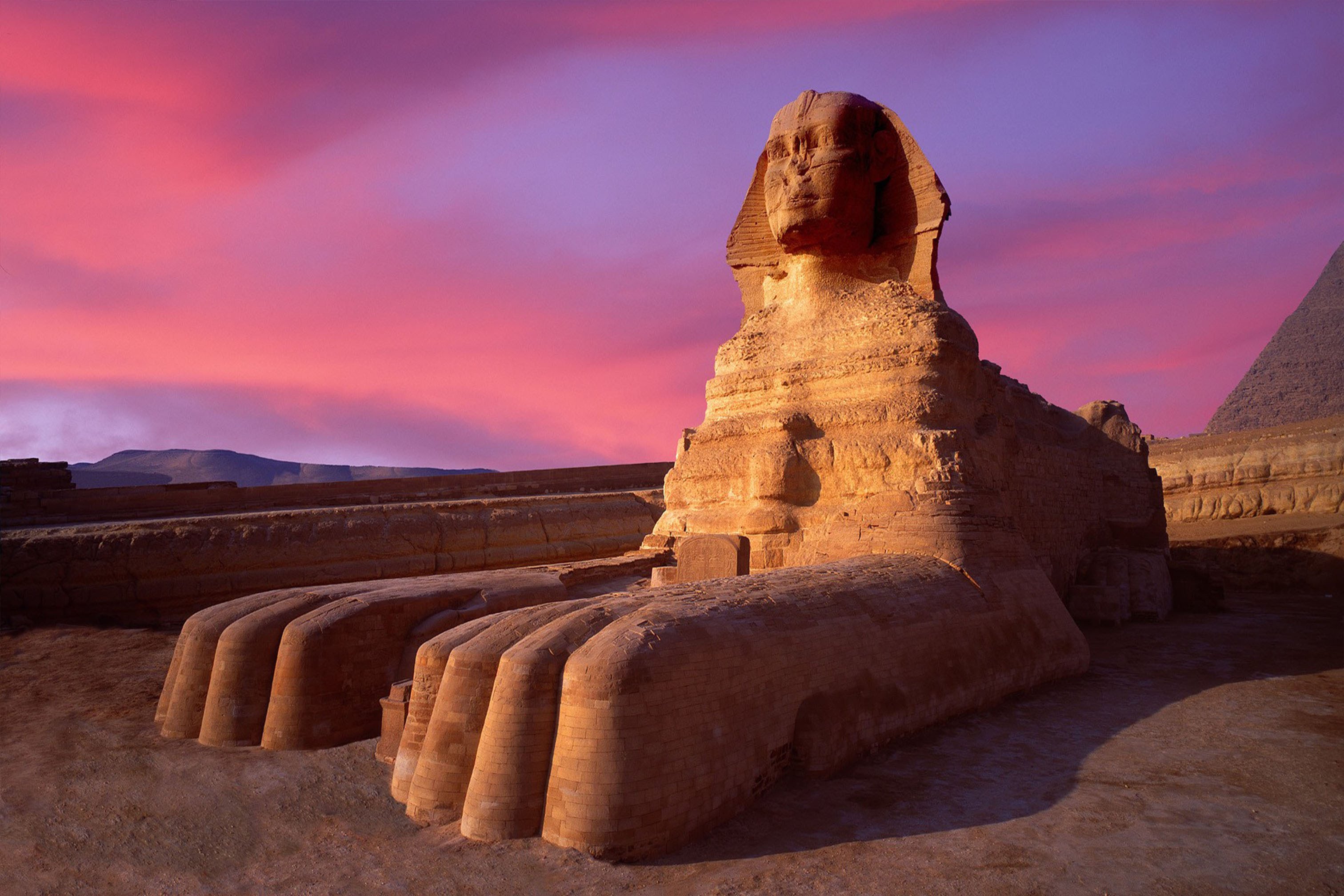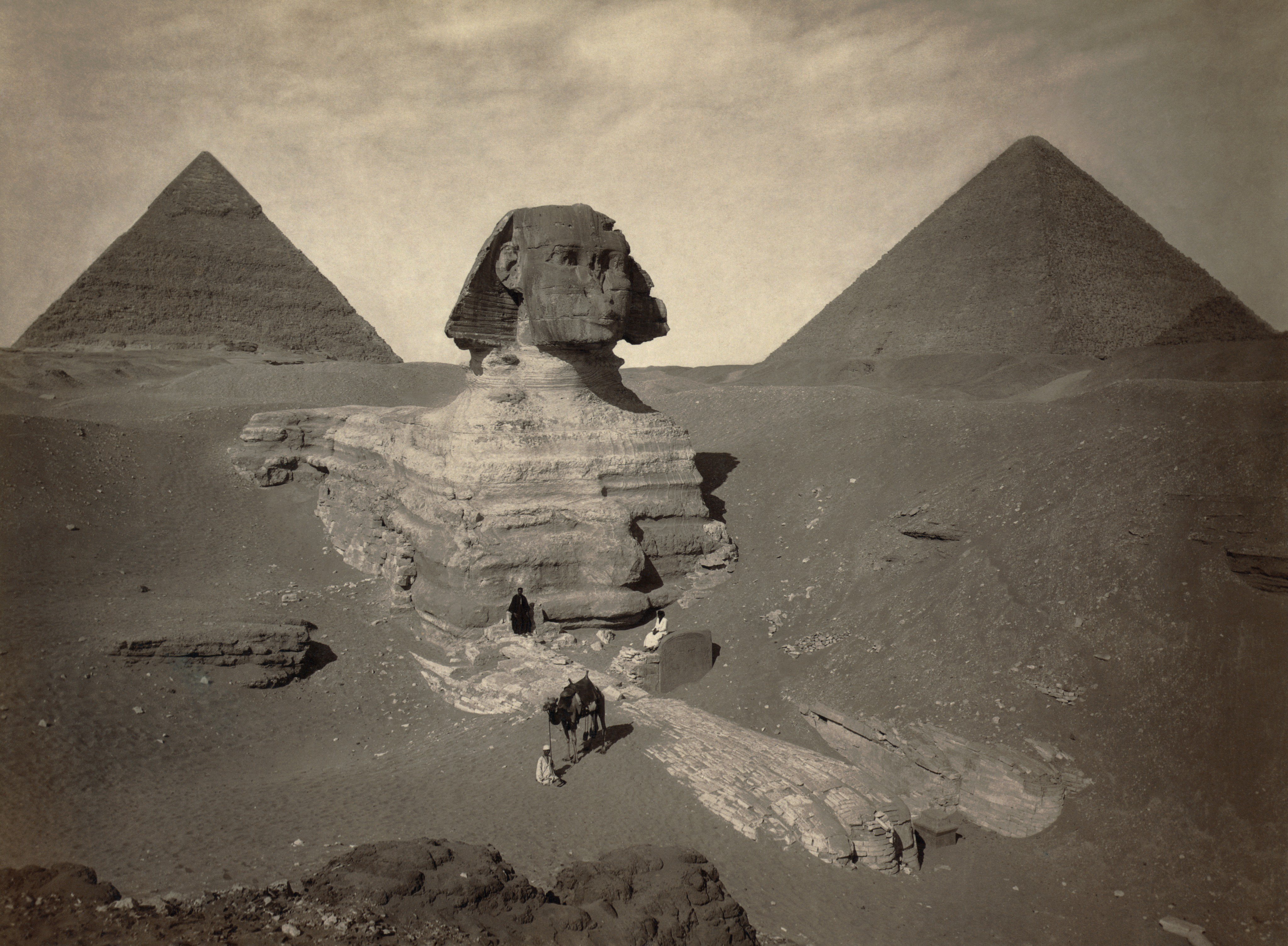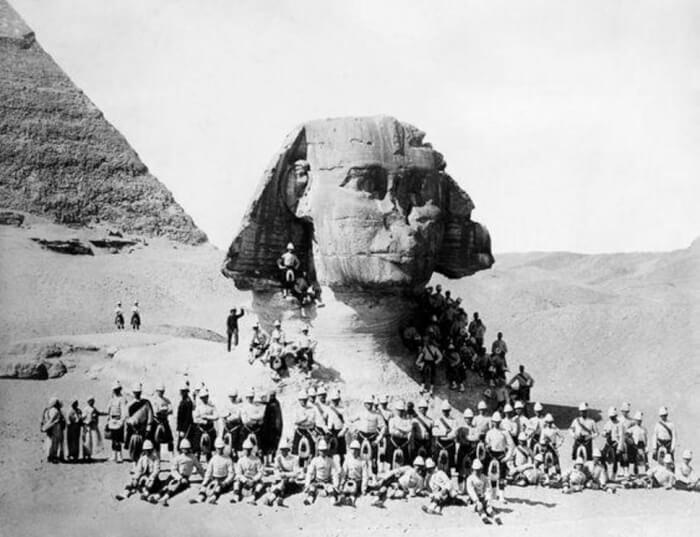The Mysteries Surrounding The Great Sphinx Of Giza
The Great Sphinx of Giza is the name of the ancient and famous Sphinx statue of Egypt. This giant statue is carved with the shape of a human head and a lion body, guarding the Pyramid of Khafre on the Giza plateau, on the West bank of the Nile, Egypt.
The Great Sphinx is located on the Giza plateau, on the west bank of the Nile, 6.2 miles from Cairo. Egyptian rulers considered it a symbol of the sun god, calling it "Her-em-akhet", which means Horus in the Horizon. The Sphinx is part of the ancient city of Memphis, a place considered to be the seat of power of the Pharaohs, not far from the three great pyramids: Khufu, Khafre and Menkaure.
After gaining power in France and claiming hegemony in Europe, Napoleon set his sights on the territory of Africa. The French army landed on the coast of Alexandria and marched to Cairo in the summer of 1798. But the harsh weather, coupled with the unfriendly welcome of the natives became a real challenge to the French soldiers. Some clamored for their return, others killed their time with excursions to the Great Sphinx, one of Egypt's enigmatic wonders, which at that point was almost buried under thick sand.
The absence of a nose is just one of the puzzles surrounding this great statue. The head of the sphinx, costumed with a traditional hairstyle, rises more than 20 meters above the ground, lying quietly on the body depicted as a lion with a length of nearly 60 meters. The Sphinx, along with the Pyramids and several burial chambers and temples, is located on the grounds of the Giza Necropolis - constructed by pharaohs Khufu, Khafre and Menkaure in the period from 2560 to 2450 B.C.
While Monalisa's smile has consumed countless efforts of researchers in never-ending debates, the Sphinx's austere and enduring expression seems to be the least talked about among the mysteries surrounding this statue. Most Egyptian historians agree that the face has the closest features to that of Pharaoh Khafre - which is understandable because the statue was constructed during his reign.
To be at peace, Thutmose began a life away from home. He spent most of his time in the desert, and was remembered as a brave man enjoying hunting and archery. On a fateful hunt, Thutmose approached the Great Sphinx and prayed. One of the promises the prince made to the Sphinx was that, if he became the next Pharaoh, he would free the statue from being buried in sandstorms. At that time, the Great Sphinx was covered by sand up to its shoulder.
The wandering prince later became the next ruler of Egypt, and fulfilled his promise to the sphinx. He conducted a large-scale excavation, and gradually excavated the legs of the sphinx. He placed between them a granite stele, known as the "Dream Stele".
There are many legends about different secret passages associated with the Sphinx. Investigations by Florida State University, Waseda University and Boston University revealed many anomalies surrounding the statue.
Nearly all of the inscriptions preserved on the associated stele refer to it as the Terrifying One. The giant Sphinx is associated with the sun god Ra, as well as the god of death Anubis, who had a jackal head. More than 1,000 years after the starting date of its construction, the Sphinx was excavated and restored for the first time.
Since its discovery, the Great Sphinx has left many unsolved mysteries for generations. Napoleon once stared at the statue and expressed his true fear, while archaeologists, explorers, historians and tourists have kept on discovering. However, it seems that the Sphinx is still one most mysterious wonders of the world.
H/T: HowStuffWorks
 Source: Getty Images
Source: Getty Images
The Sphinx symbolizes strength and wisdom
In Greek, "Sphinx" means "the strangler", thus representing a dangerous, evil force in their beliefs. On the contrary, the Egyptian sphinx statues have a male head, symbolizing strength and wisdom and are often placed at the entrance of temples, pyramids as guardians.The Great Sphinx is located on the Giza plateau, on the west bank of the Nile, 6.2 miles from Cairo. Egyptian rulers considered it a symbol of the sun god, calling it "Her-em-akhet", which means Horus in the Horizon. The Sphinx is part of the ancient city of Memphis, a place considered to be the seat of power of the Pharaohs, not far from the three great pyramids: Khufu, Khafre and Menkaure.
After gaining power in France and claiming hegemony in Europe, Napoleon set his sights on the territory of Africa. The French army landed on the coast of Alexandria and marched to Cairo in the summer of 1798. But the harsh weather, coupled with the unfriendly welcome of the natives became a real challenge to the French soldiers. Some clamored for their return, others killed their time with excursions to the Great Sphinx, one of Egypt's enigmatic wonders, which at that point was almost buried under thick sand.
 Source: Getty Images
Source: Getty Images
The absence of a nose is just one of the puzzles surrounding this great statue. The head of the sphinx, costumed with a traditional hairstyle, rises more than 20 meters above the ground, lying quietly on the body depicted as a lion with a length of nearly 60 meters. The Sphinx, along with the Pyramids and several burial chambers and temples, is located on the grounds of the Giza Necropolis - constructed by pharaohs Khufu, Khafre and Menkaure in the period from 2560 to 2450 B.C.
While Monalisa's smile has consumed countless efforts of researchers in never-ending debates, the Sphinx's austere and enduring expression seems to be the least talked about among the mysteries surrounding this statue. Most Egyptian historians agree that the face has the closest features to that of Pharaoh Khafre - which is understandable because the statue was constructed during his reign.
 Source: Getty Images
Source: Getty Images
To be at peace, Thutmose began a life away from home. He spent most of his time in the desert, and was remembered as a brave man enjoying hunting and archery. On a fateful hunt, Thutmose approached the Great Sphinx and prayed. One of the promises the prince made to the Sphinx was that, if he became the next Pharaoh, he would free the statue from being buried in sandstorms. At that time, the Great Sphinx was covered by sand up to its shoulder.
The wandering prince later became the next ruler of Egypt, and fulfilled his promise to the sphinx. He conducted a large-scale excavation, and gradually excavated the legs of the sphinx. He placed between them a granite stele, known as the "Dream Stele".
 Source: Adobe Stock
Source: Adobe Stock
The mysteries unsolved
The conundrum around the Sphinx has attracted a lot of attention, and at the same time raised countless theories about the statue's supernatural powers, one of which is the road leading to Atlantis. In fact, rumors about this relation have circulated ever since Pluto began writing about a utopian society. Around the turn of the 20th century, American psychic Edgar Allan Cayce said he had a vision of a chamber inside the sphinx, containing the secret of the location of Atlantis. He also predicted that this room would be found in 1998.There are many legends about different secret passages associated with the Sphinx. Investigations by Florida State University, Waseda University and Boston University revealed many anomalies surrounding the statue.
 Source: iStock
Source: iStock
Nearly all of the inscriptions preserved on the associated stele refer to it as the Terrifying One. The giant Sphinx is associated with the sun god Ra, as well as the god of death Anubis, who had a jackal head. More than 1,000 years after the starting date of its construction, the Sphinx was excavated and restored for the first time.
Since its discovery, the Great Sphinx has left many unsolved mysteries for generations. Napoleon once stared at the statue and expressed his true fear, while archaeologists, explorers, historians and tourists have kept on discovering. However, it seems that the Sphinx is still one most mysterious wonders of the world.
H/T: HowStuffWorks
Share this article
Advertisement